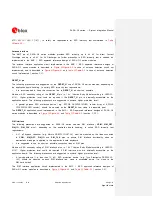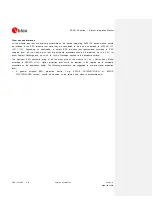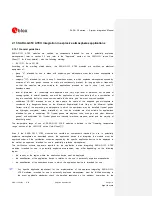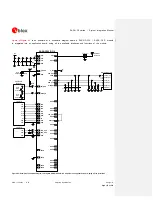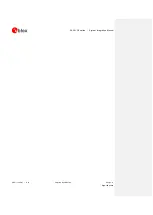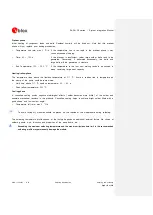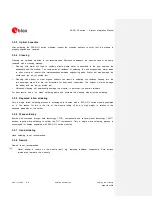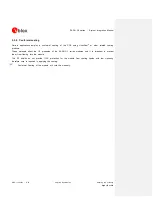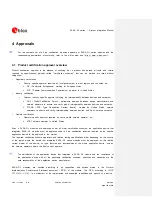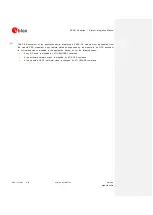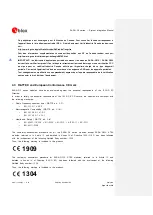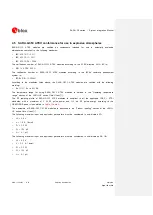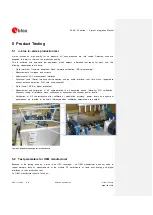
SARA-G3 series - System Integration Manual
UBX-13000995 - R06
Objective Specification
Handling and soldering
Page 173 of 218
Preheat phase
Initial heating of component leads and balls. Residual humidity will be dried out. Note that this preheat
phase will not replace prior baking procedures.
Temperature rise rate: max 3 °C/s If the temperature rise is too rapid in the preheat phase it may
cause excessive slumping.
Time: 60 – 120 s
If the preheat is insufficient, rather large solder balls tend to be
generated. Conversely, if performed excessively, fine balls and
large balls will be generated in clusters.
End Temperature: 150 - 200 °C If the temperature is too low, non-melting tends to be caused in
areas containing large heat capacity.
Heating/ reflow phase
The temperature rises above the liquidus temperature of 217 °C. Avoid a sudden rise in temperature as
the slump of the paste could become worse.
Limit time above 217 °C liquidus temperature: 40 - 60 s
Peak reflow temperature: 245 °C
Cooling phase
A controlled cooling avoids negative metallurgical effects (solder becomes more brittle) of the solder and
possible mechanical tensions in the products. Controlled cooling helps to achieve bright solder fillets with a
good shape and low contact angle.
Temperature fall rate: max 4 °C/s
To avoid falling off, modules should be placed on the topside of the motherboard during soldering.
The soldering temperature profile chosen at the factory depends on additional external factors like choice of
soldering paste, size, thickness and properties of the base board, etc.
Exceeding the maximum soldering temperature and the maximum liquidus time limit in the recommended
soldering profile may permanently damage the module.

